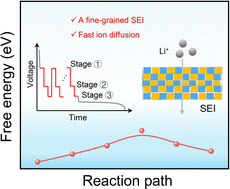Beers that use rice in the grain mix of their brewing recipe are becoming more popular. But why? db finds out.

The global rice beer sector is expected to grow at a CAGR of 4.4%, reaching US$5.51 billion by 2031. New research has shown that the category was worth US$3.91 billion in 2023, according to analysts from
Data Bridge Market Research, who revealed that the sector "is witnessing significant growth due to the rising demand for unique and artisanal alcoholic beverages”. Additionally, it is also being bolstered due to the fact that “consumers are increasingly exploring different flavours and types of beer, leading to a surge in the consumption of rice beer worldwide”.
Cleaner taste
The segmented analysis of the market has shown how “filtered rice beer appeals to consumers looking for a cleaner taste, while unfiltered variants offer a more authentic and flavourful experience”. Added to this, it noted how “the choice between bottles and cans depends on consumer preferences and the occasion, with bottles being favoured for formal settings and cans for casual consumption”.
Moreover, the findings outlined how “supermarkets and hypermarkets play a crucial role in the distribution of rice beer, offering a one-stop shopping experience for consumers”. Also looking at what is propelling the category, the analysts pointed out that although Asia leads the way, “the dominance of Asia Pacific in the market can be attributed to the cultural significance of rice beer in the region and the increasing popularity of craft breweries”.
The research highlighted how “the global rice beer market is also experiencing growth driven by factors such as increasing disposable incomes, changing consumer preferences towards premium and exotic beverages, and a growing trend of experimenting with unique flavours and ingredients”.
Rising consumer demand
Plus, the analysts noted how “the category’s main players are actively involved in product innovation, marketing strategies, and expanding their distribution networks to capitalise on the rising demand for rice beer”.
For example, Asahi “has been focusing on launching new rice beer variants to cater to different consumer segments, while AB InBev has been leveraging its strong global presence to introduce rice beer in new markets”. The report flagged how also operating in the sector, Kirin Holdings, and Suntory are also “known for their emphasis on quality and craftsmanship in their rice beer offerings, targeting discerning consumers looking for authentic and premium options”.
According to the analysts “the competitive landscape of the rice beer market is characterised by intense rivalry among key players seeking to gain a competitive edge through product differentiation, pricing strategies, and marketing campaigns” and “Heineken. and Carlsberg are leveraging their established brand reputation to introduce rice beer variants that appeal to a broader consumer base, while Thai Beverage and United Breweries are focusing on expanding their distribution channels to reach untapped markets”.
Money-saving and sustainable
Similarly, the analysts explained how “Molson Coors and Tsingtao are investing in research and development to create innovative rice beer recipes that cater to evolving consumer preferences and lifestyle trends”. Research has also recently revealed that
brewers who use milled rice could replace it with rice malt and decrease the cost of beer production by 2–12%, giving breweries reasons to look into diversifying.
The findings also outlined how “market trends indicate a growing preference for organic and locally-sourced ingredients in rice beer production, reflecting a broader shift towards sustainability and environmental consciousness among consumers” and “the incorporation of unique flavours such as exotic fruits, herbs, and spices in rice beer formulations is also gaining popularity, offering consumers a diverse range of sensory experiences."
Broadening the category, the analysis emphasised how “the increasing adoption of online retail channels for purchasing alcoholic beverages is opening up new opportunities for market players to reach a wider audience and enhance their brand visibility”.

 The global rice beer sector is expected to grow at a CAGR of 4.4%, reaching US$5.51 billion by 2031. New research has shown that the category was worth US$3.91 billion in 2023, according to analysts from Data Bridge Market Research, who revealed that the sector "is witnessing significant growth due to the rising demand for unique and artisanal alcoholic beverages”. Additionally, it is also being bolstered due to the fact that “consumers are increasingly exploring different flavours and types of beer, leading to a surge in the consumption of rice beer worldwide”.
The global rice beer sector is expected to grow at a CAGR of 4.4%, reaching US$5.51 billion by 2031. New research has shown that the category was worth US$3.91 billion in 2023, according to analysts from Data Bridge Market Research, who revealed that the sector "is witnessing significant growth due to the rising demand for unique and artisanal alcoholic beverages”. Additionally, it is also being bolstered due to the fact that “consumers are increasingly exploring different flavours and types of beer, leading to a surge in the consumption of rice beer worldwide”.


















































































![Four big takeaways to wrap up the Paris Air Show [Video]](https://breakingdefense.com/wp-content/uploads/sites/3/2023/06/FCAS-scaled-e1685718848105.jpg?#)
![The sights of Paris Air Show, one last time: Day 4 [Photos]](https://breakingdefense.com/wp-content/uploads/sites/3/2025/06/20250617-helenedelacoste-Paris-Air-Show-037-scaled-e1750357690820.jpg?#)































































